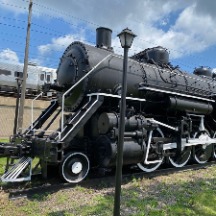This article is part of a ten-article series. See the full list of articles at the end of this one. The articles explore the issues Port of Harlem publisher Wayne Young uncovered and learned about while investing in his economically-challenged hometown, Gary, Indiana, and witnessing gentrification in once-economically challenged Washington, D.C.
The articles cover other places including South Bend, Indiana; Prince Georges County, Maryland; Washington, D.C.; Omaha, Nebraska; Flint, Michigan; Jackson, Mississippi; Florida, and the Lower Colorado River Basin States, specifically, California, Nevada, and Arizona.
Sargent, Edward, ed.
The stylish Washingtonian magazine identified Studio Theatre's 1987 move to 14th and P Streets, NW in the nation’s capital as one of the "50 Moments That Shaped Washington, DC.” When founder and former artistic director Joy Zinoman moved the regional theater into an old automotive space in1987, the sidewalks were littered with hypodermic needles and condoms, sex workers prowled the sidewalks, mansions just around the corner wasted away, and there wasn’t even a 7-Eleven.
Today, Studio Theater has expanded, residents and visitors shop on the area’s streets for goods and services from furniture and night clubs to restaurants and fitness centers. The average home price is $823,000, and upscale grocers Whole Foods and Trader Joe’s compete for customers.
It was during a trip to New Orleans, Louisiana and Savanna, Georgia that Tyrell Anderson began to change the scope of the group from “taking pictures, to taking action,” he says. It was his witnessing the preservation of buildings in other locales that aroused his desire to return home to Gary to preserve her past.
In downtown Gary, the Decay Devils are poised to replicate some of that D.C. urban feel at Union Station. “Our overall goal is to save a building and repurpose it,” says Tyrell Anderson, president of the Decay Devils.
The former intercity train station made its film debut in the 1996 film "Original Gangstas," but the Decay Devils are focusing on transforming the former depot, with its large open-space waiting room, into a mixed-use center. “You have to see the potential for big open space,” advised Zinoman.
David Graff, a Vice President at Google and one of the many creative volunteers at Decay Devils, was at the groundbreaking. “If you make these investments, business will follow,” says Graff. He added that "I have seen how job opportunities come from similar projects; gives people access.”
The station is at the main gate of United States Steel’s historic Gary Works plant and the eastern gateway to the Indiana Dunes National Park.
Within walking distance of Union Station, the Decay Devils restored the historic EJ&E No. 765 steam locomotive and is reviving Gateway Park, where the train sits, by turning on its public fountains with a $60,000 grant from Legacy Foundation’s U.S. Steel/City of Gary Indiana Charitable Fund. A John S. and James L. Knight Foundation Donor Advised Fund will also allow the Decay Devils to host several downtown outdoor events.
Knowing that one day the grant money will no longer speed down their tracks, the group is looking for ways to sustain their momentum. One possible route is to become part of a Gary Cultural/Restoration district along with a planned arts center in the 10-story Gary State Bank Building, the city’s tallest building, and the “urban-ruin,” once the prestigious City Methodist Church.
Preservation was not always Anderson’s goal. He started Decay Devils as a photography group that conducted urban explorations to other cities to take pictures. It was during a trip to New Orleans, Louisiana and Savanna, Georgia that he began to change the scope of the group from “taking pictures, to taking action,” he says. It was his witnessing the preservation of buildings in other locales that aroused his desire to return home to Gary to preserve her past.
First, he approached the school board to allow him to attempt to preserve either Emerson, Horace Mann, or Lew Wallace high school. “The school board shot us down,” he says.
“We then looked at properties where we would probably get the least resistance,” Anderson recalls. They approached the Gary Redevelopment Commission about Union Station and “they jumped right on it,” he added. The Decay Devils wrote a grant for beautification of Union Station for $22,000, “We got it and the preservation efforts began to get a life of its own,” he continued.








